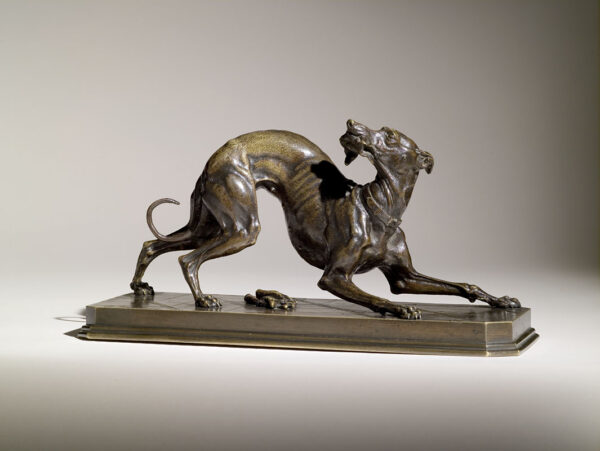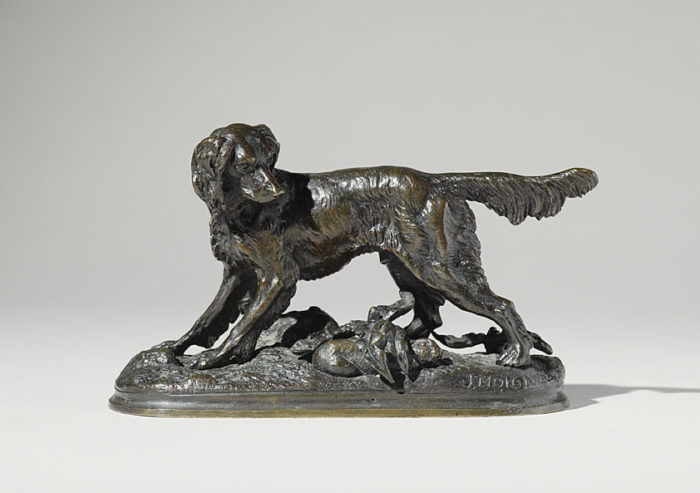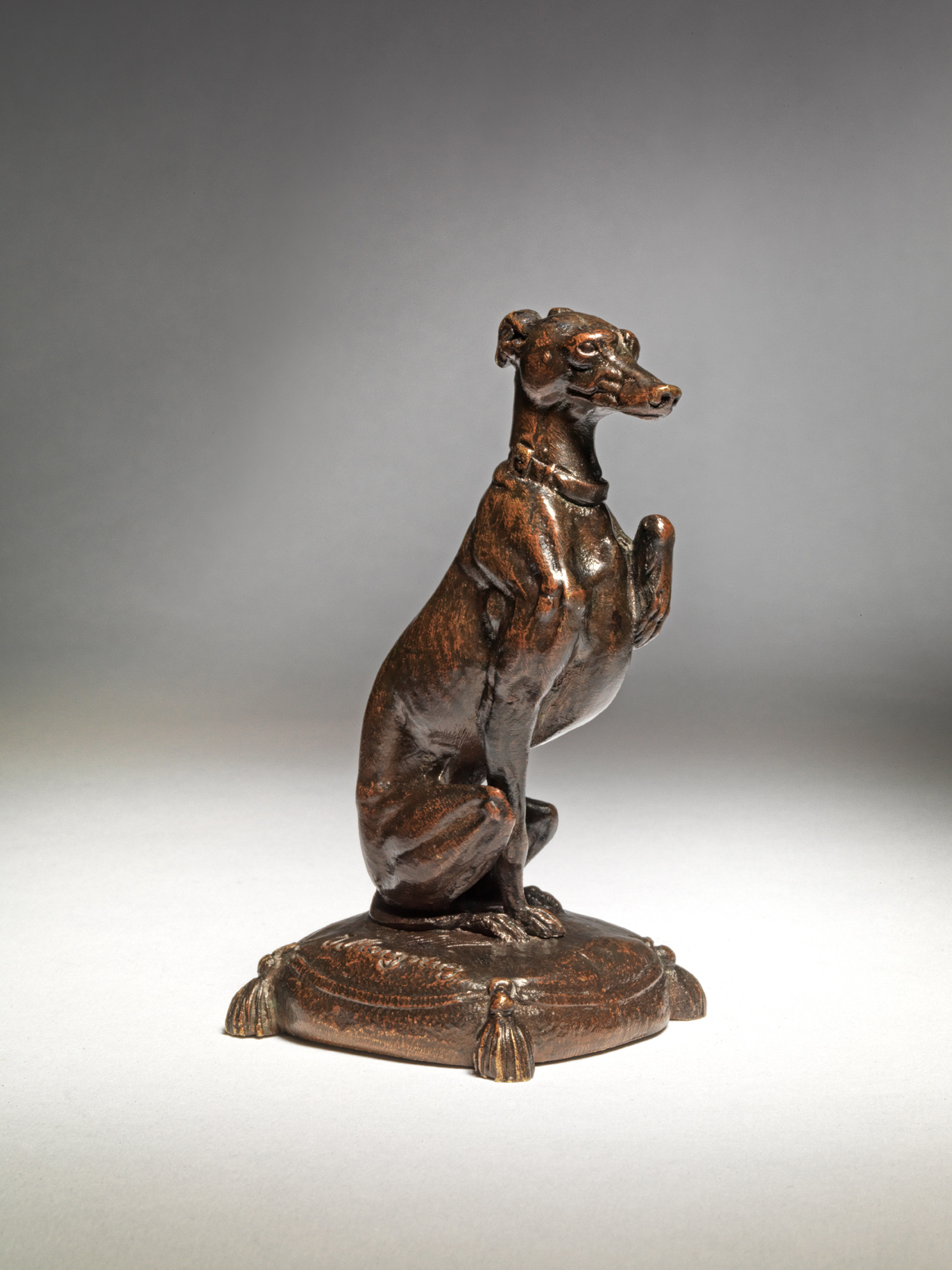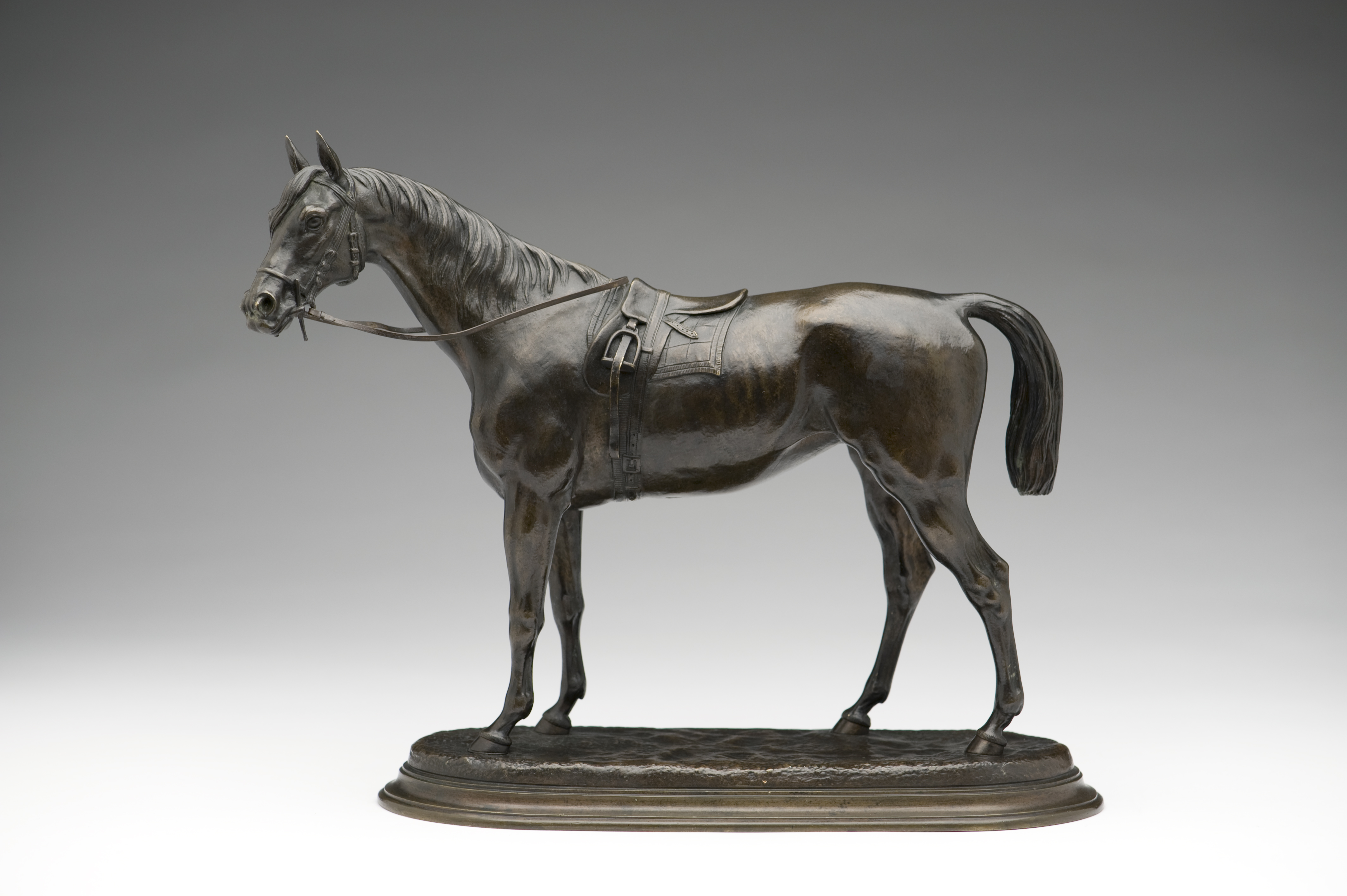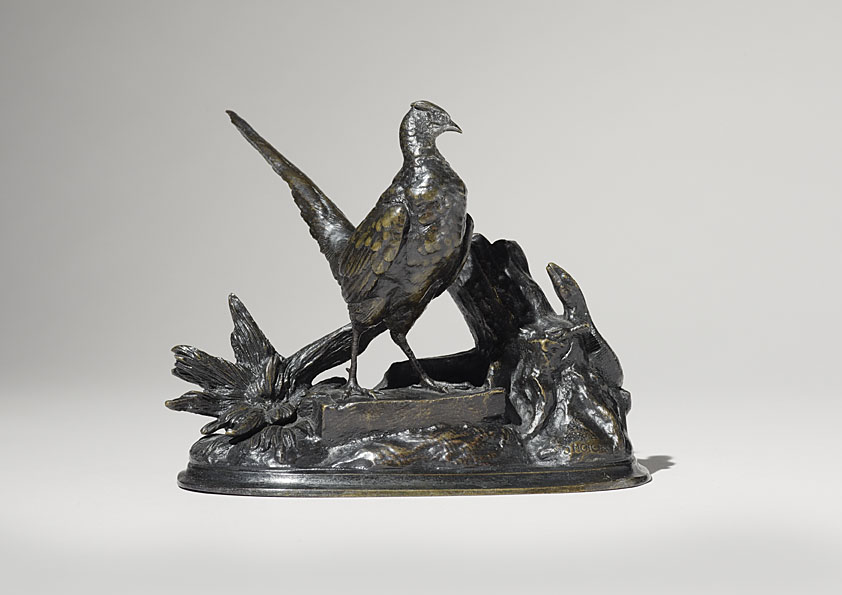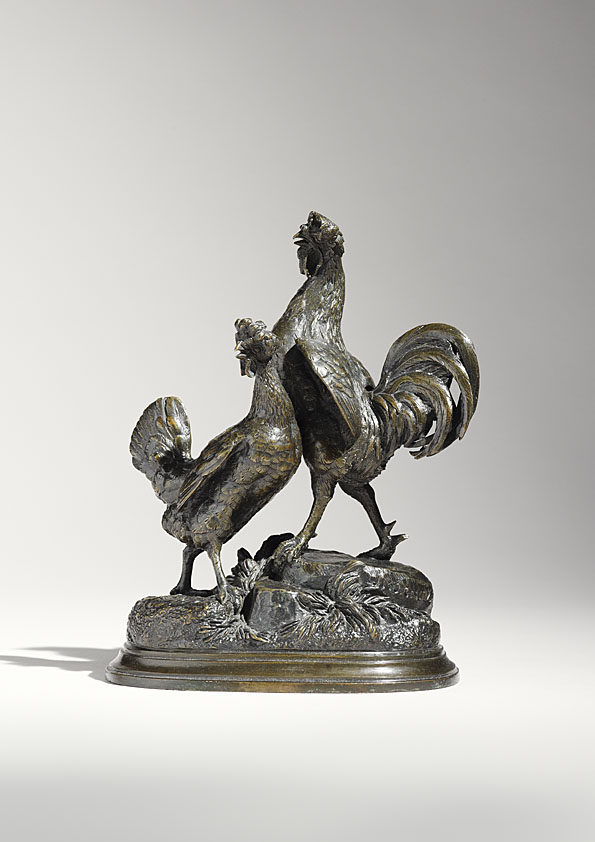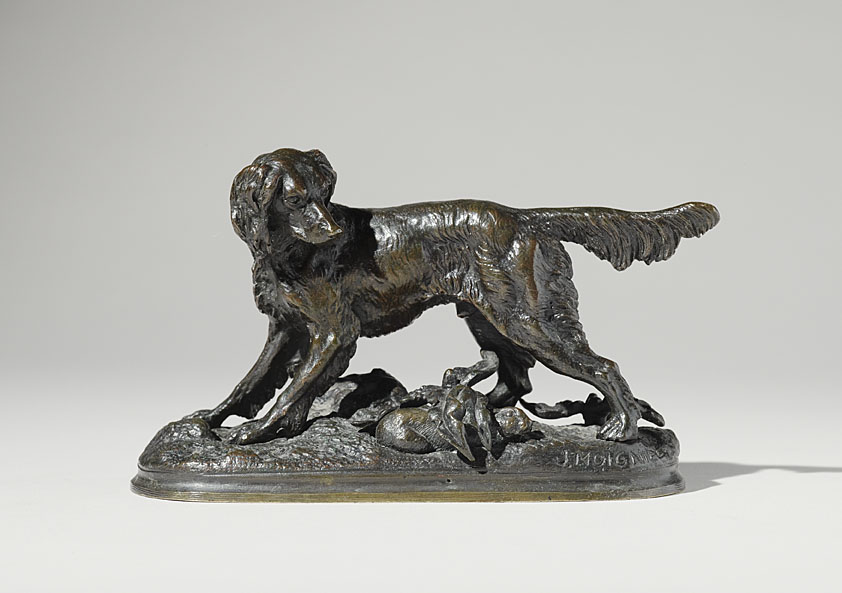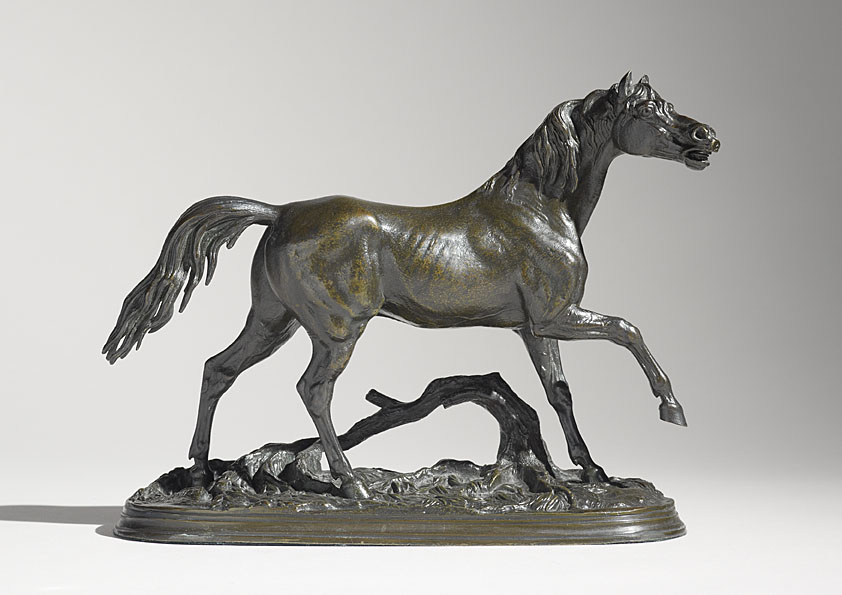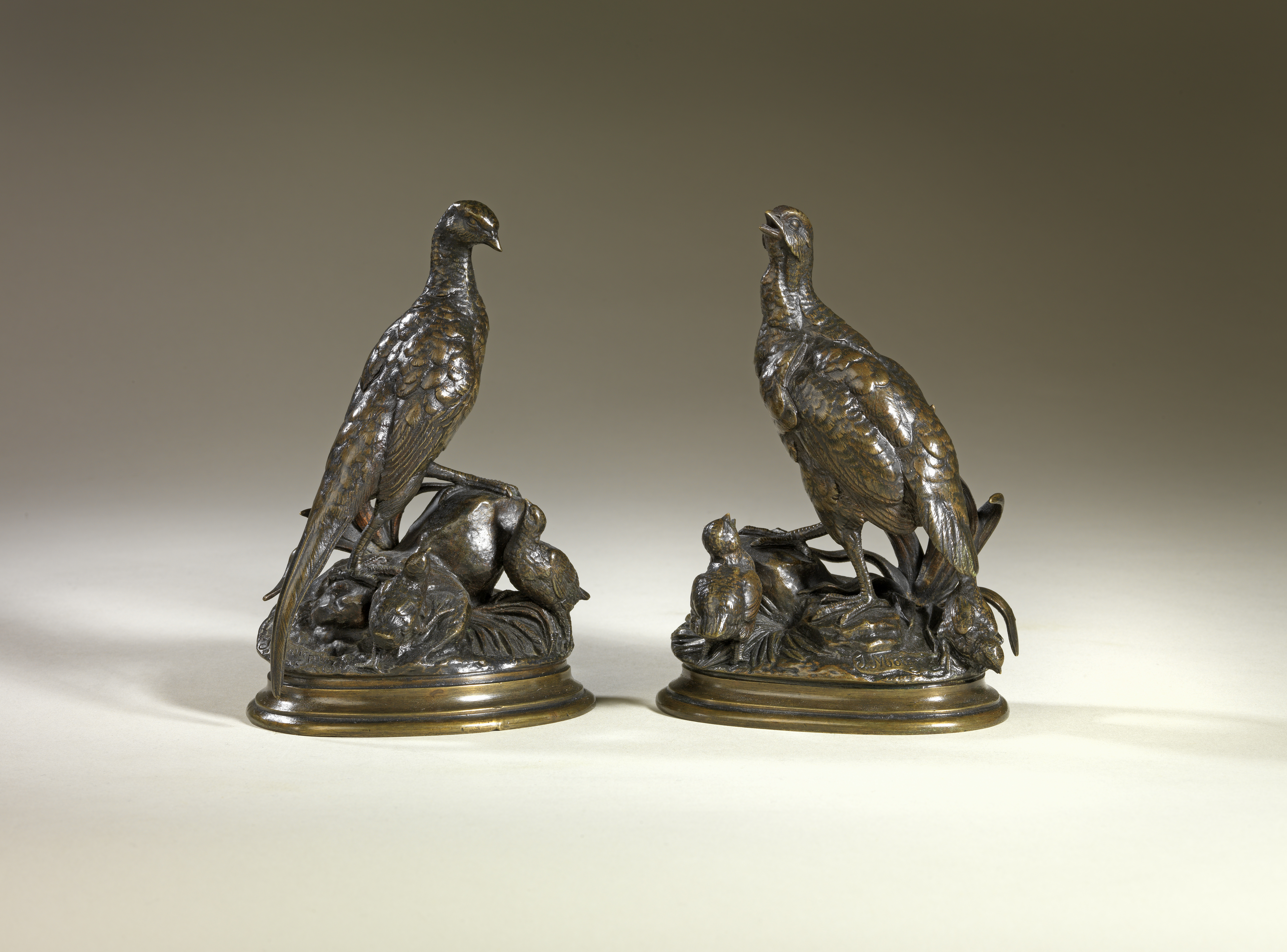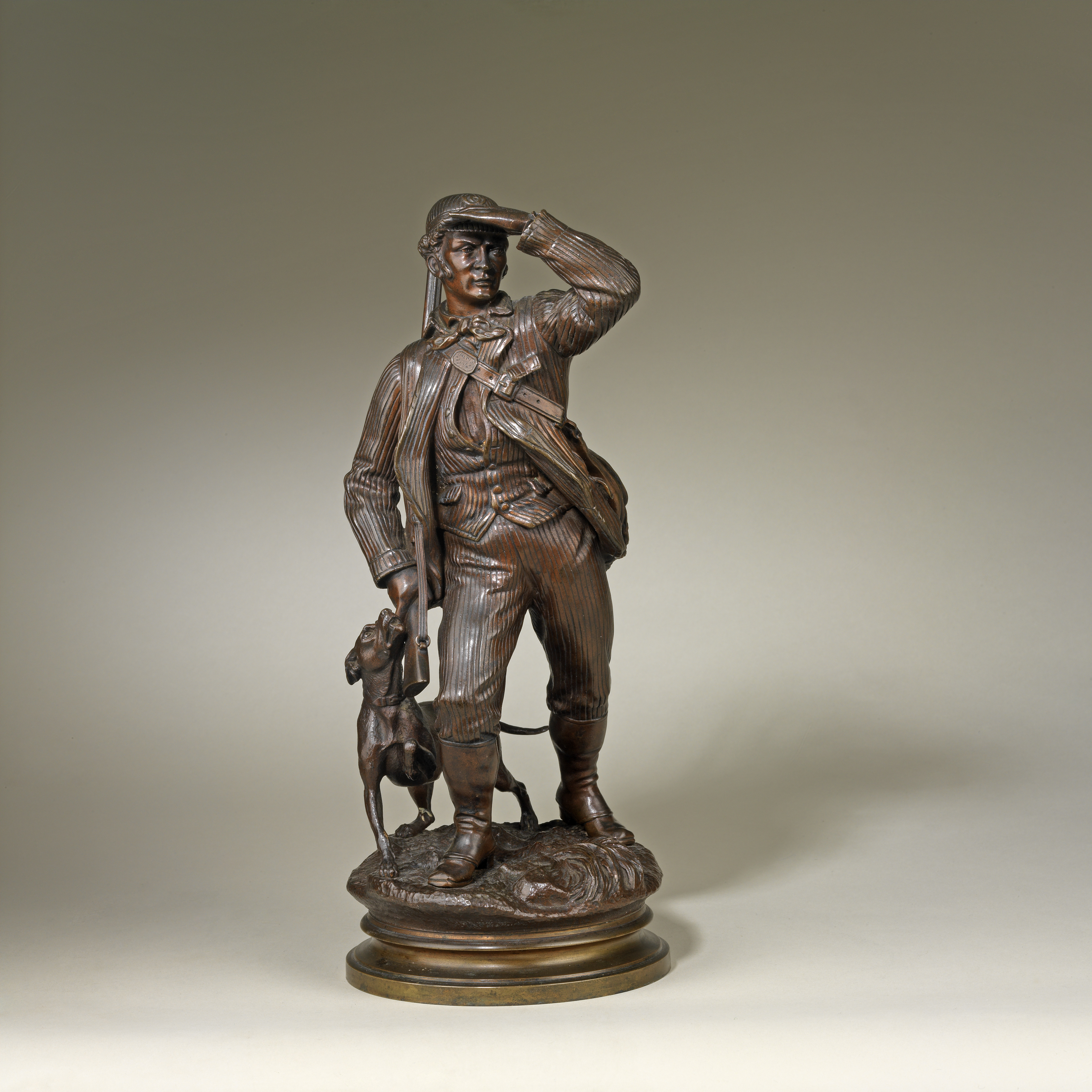Models of different breeds of dog were as well as birds Moigniez’s most favoured and popular subject. He appears to have concentrated particularly on the pointer and setter breeds and to have modelled many individual characters, perhaps taking dogs he knew as his subjects.
One of the leading sculptors of the nineteenth century known collectively as ‘Les Animaliers’, Moigniez was accomplished at modelling a wide variety of animals and birds, all of which combine a truth to nature with a sense of romanticism.
The quality of casting and finishing of his work is particularly high and owes much to Moigniez’s father who set up a foundry in 1857 solely with the intention of producing his talented son’s work. Above all Moigniez’s work is always decorative and appealing to the eye. In a period where competition was steadily on the increase, Moigniez excelled and was a favourite amongst the collectors of the day. His bronzes constantly display a high level of skill and modelling technique but lose nothing of their decorative appeal in his strive for excellence.
Moigniez’s bronzes were produced by his father, originally a gilder, who opened a foundry for the purpose. The quality of the lost-wax casts which he produced was exceptional; the bronzes were immaculately chased and a variety of patinas were used. Renowned for the plasticity of his work and for its fine detail, Moigniez’s sculpture has a certain elegance of attitude. His bronzes continued to be cast until the beginning of the twentieth century by Auguste Gouge who was his father’s successor as head of the foundry.
Moigniez’s work can be seen at the museum of the Chateau de Compiegne, north of Paris, which houses some of the French national collection. His works are also within the collections of the museum at Mont-de-Marsan.
